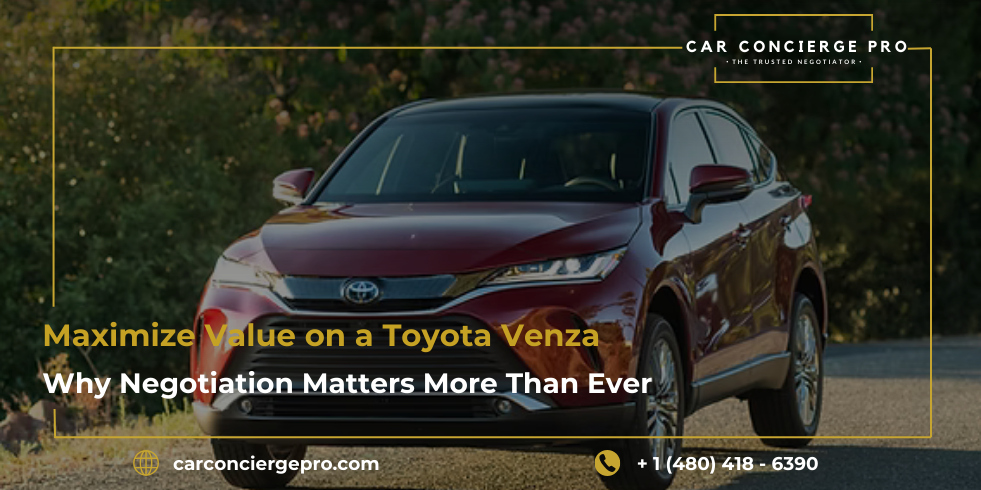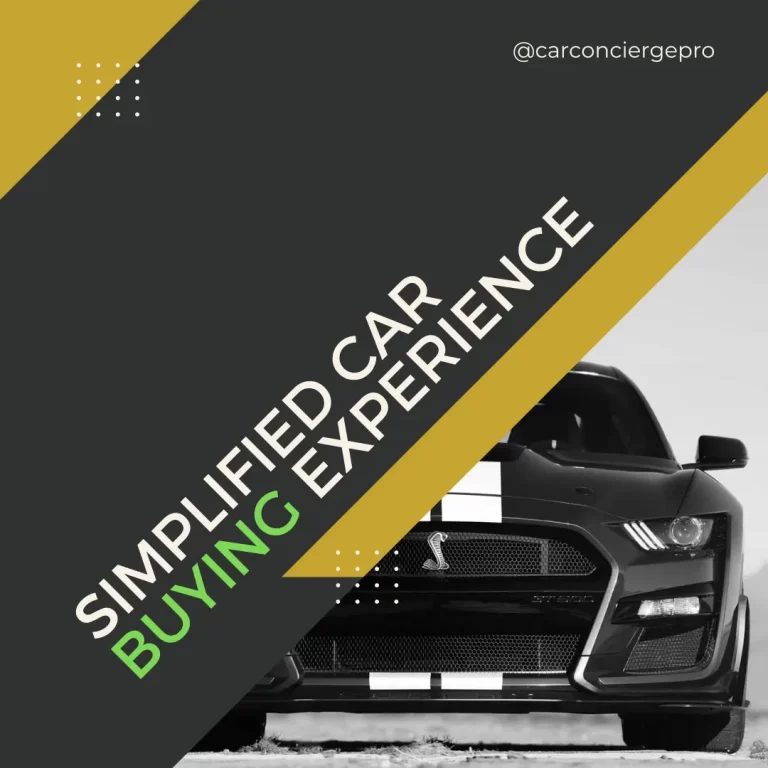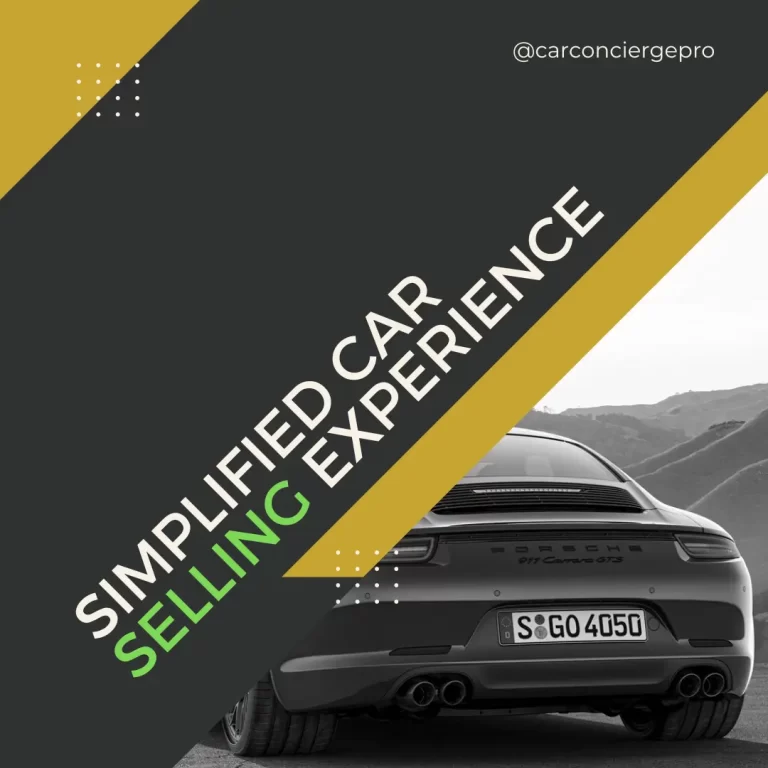Buying a new car in 2024 feels significantly different from what it was even five years ago. Prices are higher, interest rates are unpredictable, and dealer markups have become common in certain regions. For many shoppers, the challenge is not just finding the right vehicle but also ensuring they pay a fair price. This is where negotiation becomes critical.
Among midsize SUVs, the Toyota Venza has become a strong contender. Known for its hybrid technology, sleek styling, and long-term reliability, it is an attractive choice for families and professionals alike. Yet, walking into a dealership unprepared can mean overpaying by thousands of dollars.
This article will help you understand why negotiation is more important than ever when buying a Toyota Venza, what strategies work best in 2024, and how you can secure not only the best deal but also long-term value from your purchase.
What makes this discussion even more exciting is that the rules of negotiation are evolving in tandem with the car market itself. With online research tools, transparent pricing apps, and growing consumer awareness, buyers now have more power than ever before—if they know how to use it. Learning these skills with the Toyota Venza could set the stage for smarter, more confident purchases in every future vehicle decision you make.
Table of Contents
ToggleWhy the Toyota Venza Stands Out in Today’s Market
The Toyota Venza sits in a sweet spot between practicality and premium appeal. While not as bulky as a Highlander, it offers more refinement than a RAV4. For buyers who want comfort, fuel efficiency, and cutting-edge features without overspending on luxury SUVs, the Venza makes perfect sense.
Toyota Venza Hybrid Advantage
Every Toyota Venza comes as a hybrid, which instantly sets it apart in its segment. Instead of choosing between gas and hybrid trims, buyers enjoy fuel savings across the board. With mileage ratings around 39 MPG combined, the Venza saves thousands in fuel costs over five years compared to a traditional gas SUV.
This hybrid edge is not just about efficiency; it also strengthens resale value. In a world where buyers increasingly prefer eco-friendly vehicles, hybrids hold their value better. Negotiating from this perspective allows you to emphasize both immediate and long-term savings.
Toyota Venza 2024 Updates You Should Know
The Toyota Venza 2024 continues to refine its offering with upgraded safety tech, modern infotainment, and subtle design improvements. Toyota’s Star Safety System, enhanced driver-assist features, and a digital rearview mirror are highlights that keep it competitive.
Knowing these updates allows you to compare older inventory with new arrivals. If a dealer has unsold 2023 models, you can use the arrival of 2024 units as leverage to secure a better price on last year’s version.
The Rising Importance of Negotiation in 2024
Inflation and Car Pricing Pressure
Inflation has increased car prices across the board. Even though supply chain disruptions have improved, manufacturers are slow to bring down MSRPs. For a model like the Toyota Venza, buyers need to recognize that the sticker price is not fixed—it is simply a starting point for negotiation.
What many shoppers overlook is that dealers often build in extra profit margins to offset inflation, assuming buyers will accept prices at face value. Smart negotiators challenge this assumption by researching market trends, comparing regional pricing, and even leveraging online offers as bargaining tools. Remember, just because inflation has driven prices upward doesn’t mean you should carry the full burden. With patience and the right strategy, you can push past inflated markups and secure a deal that reflects the true value of the Venza—not the dealership’s padded margins.
Dealer Incentives and Market Shifts
Dealers often receive manufacturer incentives that are not advertised to the public. These can include bonuses for selling hybrid vehicles, clearing older inventory, or hitting monthly and quarterly sales targets. For a savvy buyer, understanding these incentives can be a game-changer when negotiating a Toyota Venza.
Market shifts also play a key role. With the growing popularity of hybrid SUVs and the arrival of newer models like the Toyota Venza 2024, dealers may adjust pricing strategies to remain competitive. By staying informed about inventory levels, regional promotions, and competitor pricing, you can leverage these shifts to your advantage. In many cases, simply knowing which incentives are available—or asking the right questions—can translate into significant savings, added perks, or both.
How to Negotiate for the Best Value on a Toyota Venza
Researching Before You Step into the Dealership
The most powerful tool in negotiation is knowledge. Before walking into a Toyota showroom, compare prices using trusted platforms like Kelley Blue Book, Edmunds, or Cars.com. Check for regional rebates and hybrid tax credits where applicable.
When you demonstrate that you know the fair market value of a Toyota Venza, dealers are far less likely to inflate prices.
Timing Your Purchase for Maximum Savings
Timing can save you thousands. End-of-month, quarter, or year-end sales events are ideal times to buy, as salespeople are eager to hit targets. Similarly, when a new model year (like the Toyota Venza 2024) hits the lot, older models often receive discounts.
Leveraging Trade-Ins and Financing Options
Your existing vehicle can be a bargaining chip. Get your trade-in appraised independently so you know its true worth. Additionally, pre-qualifying for financing with your bank or credit union gives you leverage to avoid being locked into higher dealer rates.
Common Mistakes Buyers Make with the Toyota Venza
Accepting Sticker Price Without Question
Many buyers mistakenly believe the MSRP is fixed and cannot be negotiated.
In reality, most dealerships build in at least a 5–10% margin for negotiation.
By doing your homework, you can identify the fair market value.
Showing interest in multiple dealerships increases your bargaining power.
Never assume the sticker price is final—it’s simply a starting point.
Ignoring Hybrid Fuel Economy Benefits
Some buyers focus only on the sticker price and ignore the long-term advantages of owning a hybrid. The Toyota Venza delivers excellent fuel efficiency—around 39 MPG combined—which can save you thousands of dollars in fuel costs over five years compared to a gas-only SUV. Smart negotiators use these numbers to strengthen their case, showing that the hybrid’s savings should be reflected in a better deal upfront. When you highlight lifetime cost reductions, dealers are more likely to consider lowering the purchase price or offering additional incentives.
Overlooking Long-Term Resale Value
Underestimating the Toyota Venza’s resale value is another frequent error. In the used car market, hybrids—particularly Toyotas—consistently hold their value due to their dependability and fuel efficiency. A Venza that is three to five years old, for instance, frequently sells for a larger percentage of its initial value than competitors like the Ford Edge or Nissan Murano. Remind the dealer throughout the negotiation that you are spending money on a car with a track record of dependability and high demand for resale. In a market where astute consumers take long-term returns into account, a reasonable reduction now not only benefits you but also maintains the dealer’s competitiveness.
Practical Negotiation Tips that Work in 2024
Use Online Tools and Market Data
Websites that track car prices show what others in your zip code are paying for a Toyota Venza. Walk in with printouts or screenshots to back your negotiation.
Ask for Add-Ons, Not Just Discounts
If the dealer won’t budge on price, ask for perks: extended warranties, free maintenance, roof racks, or all-weather mats. These add value without increasing your out-of-pocket cost.
Be Ready to Walk Away
The most powerful tactic is your willingness to leave. If a dealer sees you are not desperate, they are more likely to match your terms.
Case Study – Negotiating a Toyota Venza Hybrid in a Competitive Market
Meet Sarah, a professional living in California who decided to upgrade her vehicle in 2024. After months of research, she had her eyes set on the Toyota Venza Limited Hybrid because of its refined interior, fuel efficiency, and reliability. However, like many buyers, she faced a market where demand was high and dealers were reluctant to drop prices.
Step 1: Initial Quote
When Sarah first visited her local Toyota dealership, she was given a quote of $41,000 for the Venza Limited. The salesperson explained that the Venza was a popular hybrid model and that inventory was moving fast. To many first-time buyers, this situation feels intimidating—almost as if the price is non-negotiable.
Step 2: Independent Research
Instead of accepting the initial offer, Sarah went home and began gathering data. She checked Kelley Blue Book (KBB) to understand the fair market value, used Edmunds to read regional pricing trends, and even visited Toyota’s official site for information about seasonal rebates. Her research revealed two important facts:
- Regional rebates in California were available for hybrid vehicles, offering savings of up to $1,500.
- Several nearby dealerships still had unsold 2023 Toyota Venza inventory because the 2024 models had just arrived.
Step 3: Comparing Dealer Offers
Sarah then contacted three other Toyota dealerships within a 50-mile radius. One dealership hinted at being able to reduce the price if she was willing to look at a 2023 model, while another offered competitive financing but a higher upfront cost. Collecting these offers gave her leverage—she could now walk into negotiations with proof that better deals existed.
Step 4: Strategic Negotiation
Armed with information, Sarah returned to the first dealership. Instead of simply asking for a discount, she carefully presented her case:
- She showed the salesperson printouts of competitor offers.
- She mentioned the $1,500 hybrid rebate that should apply.
- She pointed out that unsold 2023 inventory in nearby lots was being priced more aggressively.
By doing this, she reframed the negotiation—she wasn’t just asking for a lower price; she was demonstrating why the dealer should lower it to stay competitive.
Step 5: The Dealer’s Counter and Final Agreement
Initially, the dealer only offered a small $500 discount, but Sarah stood her ground. She politely explained that she had other options and was prepared to leave. At that point, the salesperson went back to the manager, and after some back-and-forth, they agreed to sell the 2023 Toyota Venza Limited Hybrid for $38,500—a reduction of $2,500 from the original quote.
To sweeten the deal, they also included two years of free maintenance, which added another $600–$800 worth of value over time.
Step 6: Outcome and Takeaways
In the end, Sarah saved nearly $3,000 upfront, plus additional maintenance costs. Over the next five years, her fuel savings from the hybrid system would total thousands more, making her negotiation even more impactful.
This case highlights key lessons for buyers:
- Preparation is power: Knowing rebates, dealer inventory, and competing offers shifts the balance.
- Timing matters: The transition from 2023 to 2024 models gave Sarah room to negotiate.
- Confidence pays off: Being willing to walk away forced the dealer to re-evaluate the offer.
Even in a competitive market, a well-prepared buyer can turn what looks like a fixed price into an opportunity for significant savings.
Maximizing Resale Value: Thinking Beyond the Purchase Price
Negotiation doesn’t stop once you drive your Toyota Venza home.
Keeping the SUV in excellent condition helps you secure a stronger resale price later.
Regular servicing at authorized centers shows future buyers that the car was well-maintained.
Maintaining detailed service records builds trust and can justify a higher asking price.
Avoiding unnecessary aftermarket modifications protects both performance and value.
By thinking long-term, you maximize the true financial return on your investment.
Toyota Venza vs. Competitors – Where Negotiation Gives You the Edge
The Honda CR-V Hybrid is a strong rival, offering practicality and spacious cargo, but it lacks the premium feel of the Venza’s cabin.
The Nissan Murano boasts bold styling and comfort, yet it lags behind the Venza in hybrid efficiency and resale value.
The Ford Edge provides good performance and tech features, but its fuel economy cannot match Toyota’s hybrid system.
The Hyundai Santa Fe Hybrid is competitively priced, but long-term reliability favors the Toyota brand.
The Subaru Outback offers rugged versatility and off-road confidence, though its hybrid options are limited compared to the Venza.
The Kia Sorento Hybrid adds third-row seating, but buyers often trade off fuel economy and resale value.
Compared to these models, the Venza consistently leads in fuel efficiency, averaging nearly 39 MPG combined.
It also outshines most competitors in resale value, a crucial point for long-term savings.
Buyers can use these advantages as leverage when negotiating, showing the dealer that rivals may offer features but not the same overall value.
Ultimately, the Venza blends premium comfort, proven reliability, and hybrid performance, giving you the edge at the negotiation table.
Final Thoughts – Negotiation as a Lifelong Car-Buying Skill
Negotiation is not a battle; it is a smart financial habit that pays off every time you buy a car.
The Toyota Venza already delivers style, hybrid efficiency, and long-term reliability, but your buying strategy decides its true value.
Walking into a dealership with research, market data, and confidence puts you in control of the conversation.
Instead of viewing the MSRP as fixed, see it as the starting line for securing a better deal.
Highlighting the Venza’s hybrid savings and resale strength makes your case stronger during talks.
Even small wins—like free maintenance or add-on accessories—can save hundreds over time.
The key is patience, persistence, and a willingness to walk away when terms don’t fit your budget.
Every negotiation experience sharpens your skills for future purchases, whether it’s a car, home, or major investment.
With the right approach, you don’t just buy a vehicle—you build long-term financial confidence.
Think of negotiation not as pressure, but as your lifelong tool to maximize value and protect your hard-earned money.
FAQs
Q1: Is the Toyota Venza worth buying in 2024?
Yes, the Toyota Venza is worth buying in 2024, especially if you value fuel efficiency, reliability, and modern features. The Venza is sold exclusively as a hybrid, which means you’ll save significantly on fuel compared to non-hybrid SUVs. Toyota has also added updated safety features, a larger infotainment screen, and more driver-assist options in the Toyota Venza 2024, making it even more competitive. Beyond efficiency, its sleek design and upscale interior position it above the RAV4 but below luxury SUVs like Lexus RX, giving you premium comfort without the luxury price tag.
Q2: How much can I realistically negotiate off the price of a Toyota Venza?
While negotiation outcomes vary, buyers can often secure 5–10% off the MSRP if they approach the process strategically. For example, if the sticker price of a Toyota Venza Limited trim is $42,000, a well-prepared buyer might bring it down to around $38,000–$39,000, especially when factoring in dealer incentives or year-end sales events. The key is timing your purchase, comparing offers from multiple dealers, and being willing to walk away. Additionally, look for unadvertised rebates on hybrids, which sometimes allow for deeper discounts than you’d expect.
Q3: Does the Toyota Venza only come as a hybrid?
Yes. Since its reintroduction in 2021, the Venza has been offered exclusively as a hybrid SUV. This decision aligns with Toyota’s long-term strategy of transitioning to more fuel-efficient and eco-conscious vehicles. The hybrid system not only reduces emissions but also delivers excellent fuel economy—around 39 MPG combined, which is exceptional for a midsize crossover. Unlike traditional SUVs that offer gas and hybrid options, the Venza simplifies the decision by giving you hybrid benefits across all trims. For resale value, this is also a plus, as hybrid vehicles tend to remain in demand.
Q4: When is the best time to buy a Toyota Venza for maximum savings?
The best time to buy is usually tied to dealership sales cycles and model year changes. End-of-month, end-of-quarter, and especially year-end (November–December) are peak times for discounts, as dealerships push to hit sales targets. Another excellent window is when the new model year, such as the Toyota Venza 2024, arrives—this prompts dealers to clear older inventory. For instance, if you’re open to buying a 2023 model when 2024 versions are on the lot, you can often negotiate several thousand dollars off. Staying flexible with color and trim options can also increase your bargaining power.
Q5: How does the Toyota Venza compare to the RAV4 Hybrid?
Both vehicles share Toyota’s hybrid expertise, but they serve slightly different audiences. The RAV4 Hybrid is more rugged and versatile, appealing to outdoor enthusiasts who may want towing capability and off-road packages. The Toyota Venza, by contrast, is more premium, with a sleeker design, quieter cabin, and features such as a panoramic roof and digital rearview mirror. If you prioritize fuel economy and style over cargo space and ruggedness, the Venza is the smarter pick. However, if you frequently need all-terrain driving or higher cargo flexibility, the RAV4 Hybrid may be a better choice.




 and Canada
and Canada 




